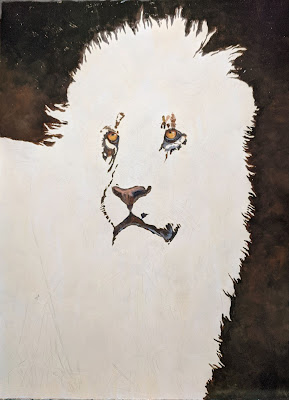My painting Ice Bear has been awarded 3rd place in the Challenges of Climate Change presented by Science Art-Nature. The awards were announced December 2021.
While art is an important focus of the Challenges of Climate Change, so is the science. To see more about Ice Bear in this context, click here.
For more about the non-profit Science Art - Nature, click here.
From the Science Art - Nature website:
Works of Science Art skillfully represent truths about the world and its creatures, often suggesting important connections among subjects and their surroundings and teaching us indirectly about nature itself.
To qualify as Science Art and to work well, the rendering is accompanied by an explanatory caption that helps the viewer decode the underlying science.
We have been asked: “Why Science Art?” The term neither describes the science of artistic creation nor the depiction of scientific events.
Instead, we see in Science Art a kind of cultural fusion in which painting or sculpture or photography say something about the natural world and how it works. Whether or not it is motivated by a scientific purpose, a work of Science Art can enrich the viewer with a sense that its subject is connected with, and could help explain, relationships.
The artist sometimes uses scientific knowledge and findings; sometimes these emerge only because the artist’s execution is sensitive and faithful to these relationships.
We have also been asked: “Why not ‘Environmental Art’ or ‘Wildlife Art’ or ‘Nature Art’?” Works of art that represent truths about the natural world and its creatures certainly include these categories, although not all examples of Environmental Art, Wildlife Art, and Nature Art convey truths. Here, too, it is the explanatory caption that provides the viewer with access to truths that might otherwise be overlooked.










